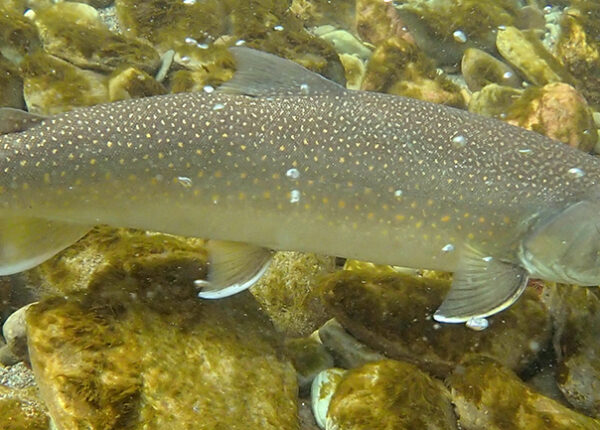FWCP funds purchase of habitat for threatened Caribou
With funding from the Fish & Wildlife Compensation Program (FWCP) in the Peace Region, The Nature Trust of British Columbia has purchased the 223 hectare (551 acre) Kennedy Siding property in central B.C.
Kennedy Siding is critical habitat for threatened Woodland Caribou that winter on the property from October through January, and it is now part of a much larger complex of conservation lands.
“Funding land securement is one of our most effective tools to help wildlife over the long-term,” says FWCP Peace Board Co Chair and public representative, Wayne Sawchuk. “We’re providing funding for this project because it is a rare opportunity to eliminate the risk of development on privately-owned land that is valuable habitat for caribou — one of our priority species we’re supporting.”
The FWCP is a partnership between BC Hydro, the Province of B.C., Fisheries and Oceans Canada, First Nations and Public Stakeholders that conserves and enhances fish and wildlife in watersheds impacted by existing BC Hydro dams.
Jasper Lament, CEO of The Nature Trust of BC says, “We are proud to add the Kennedy Siding property to the more than 71,000 hectares (175,000 acres) of vulnerable habitat we protect and care for across this province. It is a win for this population of threatened caribou in B.C. and an example of what is possible when conservation partners work together.”
“Based on monitoring of radio-collared caribou, we know that about 20 per cent of the low elevation winter range use of Kennedy Siding caribou occurs on the property. Acquisition of this land, in combination with the surrounding Provincial Ungulate Winter Range, now ensures that the entire low elevation winter range of this Threatened caribou herd will be protected and managed as caribou habitat,” says Dr. Dale Seip, Wildlife Ecologist, B.C. Ministry of Environment and Climate Change Strategy.
Other facts:
- Kennedy Siding is located southeast of Mackenzie in the central part of the province. It features a thriving lichen community which is the main food source for Woodland Caribou in this area.
- Woodland Caribou (Southern Mountain population) feed on terrestrial lichens on this property until snow levels increase to a level where it is more advantageous to browse terrestrial and arboreal lichens in the forested portions of the winter range area, where snow levels are lighter. The Kennedy Siding herd is stabilizing, currently at a population of ~50 individuals.
- The property is completely surrounded by Crown land designated as Ungulate Winter Range (~2900 hectares/7,165 acres) for the Kennedy Siding Caribou herd, thus it is part of a larger complex of conservation lands.
- Caribou live in the arctic tundra, alpine areas and northern forests. They are well adapted to these areas because of a dense coat and large round hooves which allow them to walk easily in dense snow and boggy ground. Unlike other members of the deer family, both male and female caribou have antlers. The males lose their antlers in the winter while the females retain theirs until their calves are born in the spring.
- Moose, Elk, Mule Deer, Black Bear, Grey Wolf, and Grizzly Bear (Blue-listed) have all been confirmed in the immediate area of the Kennedy Siding property.





